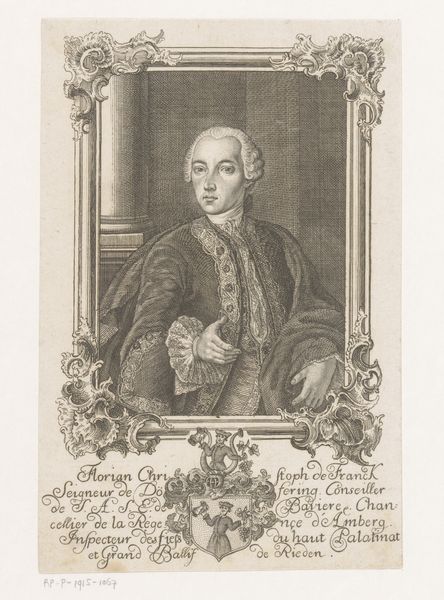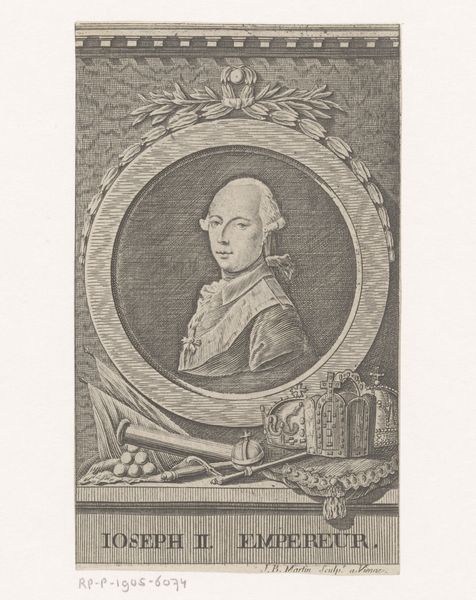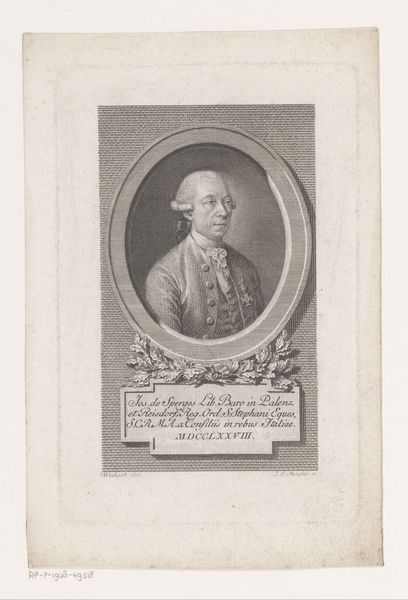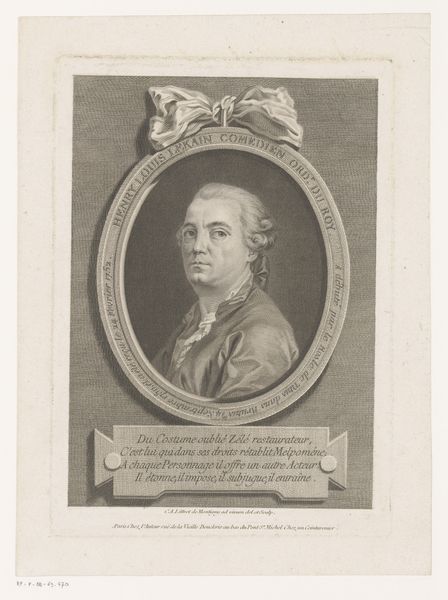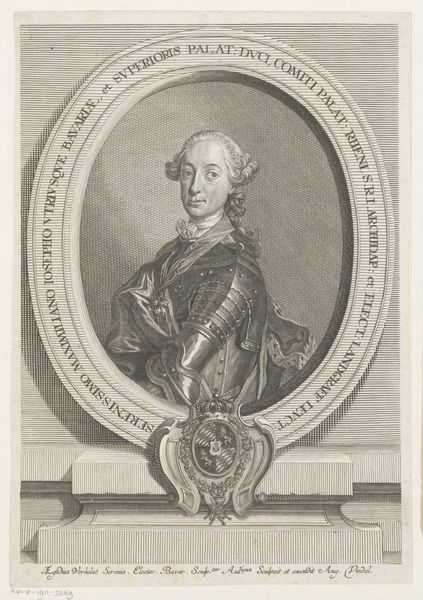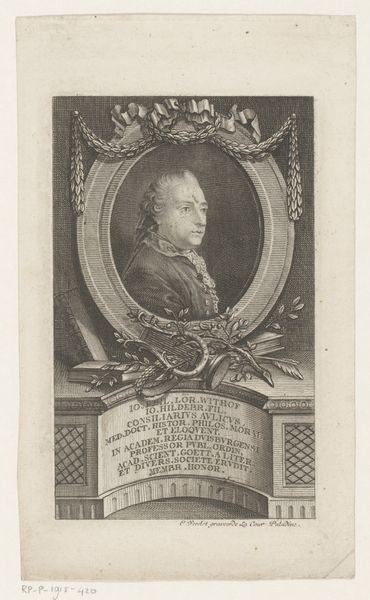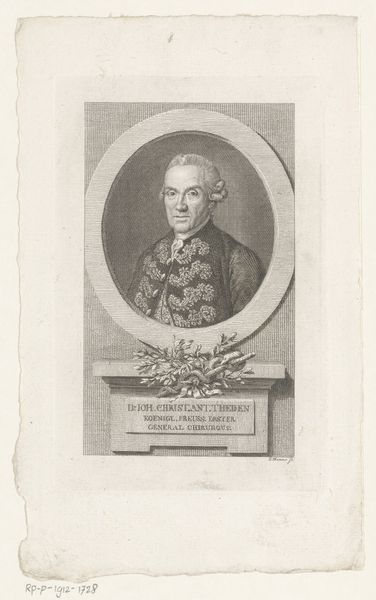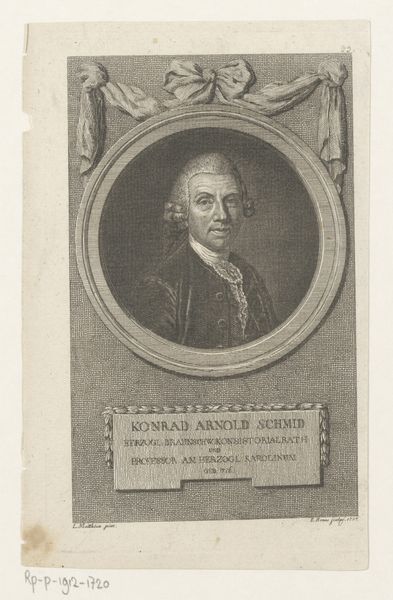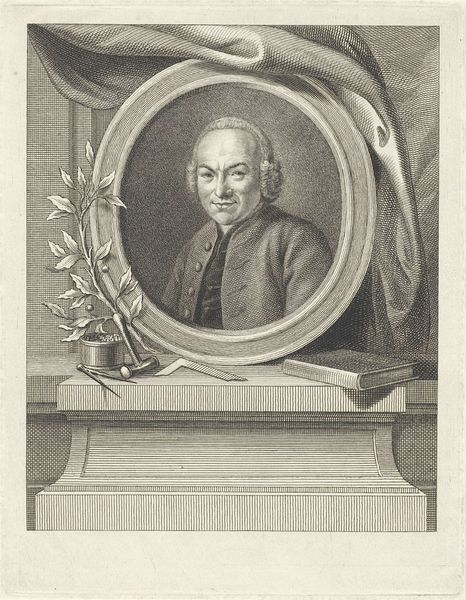
engraving
#
portrait
#
neoclacissism
#
old engraving style
#
caricature
#
portrait reference
#
portrait drawing
#
history-painting
#
engraving
Dimensions: height 289 mm, width 194 mm
Copyright: Rijks Museum: Open Domain
Curator: Here we have a print entitled "Portret van Jacques Necker," created sometime after 1751. The portrait before you, an engraving, is currently held here at the Rijksmuseum. Editor: My first impression is one of formality, almost a detached grandeur. It's incredibly detailed, but the limited tonal range makes it feel quite austere, despite the floral embellishments around the portrait. Curator: It’s true, the image conveys a sense of power and importance tied to Necker's public role. As Director-General of Finances, a position of considerable influence in pre-revolutionary France, Necker was at the very heart of fiscal and political power. This portrait clearly plays into the iconography of authority. Note how the tools of the trade – inkwell and folio – subtly allude to Necker’s intellectual pursuits and administrative duties. Editor: Absolutely. And looking at it from a contemporary perspective, one has to ask, “Who was this portrait really for?” Was it meant to legitimize Necker, project an image of competence? It's a curated persona, after all. Even the Neoclassical style, with its emphasis on order and reason, reflects the desired image of a capable and enlightened leader. The question then becomes, who benefitted from that carefully crafted image? Curator: Well, certainly the intention was to promote confidence in the French financial system. In the late 18th century, printed portraits circulated widely, shaping public perception and reinforcing existing power structures. I would suggest such images of those in power were very carefully planned, often even used to further promote the legitimacy of royal governance in the French Imperial period. Editor: I find myself wondering about those whose voices aren't represented here, and if perhaps these displays of wealth created an even further division from the underclasses. As beautiful as this rendering is, we must always be sensitive to this kind of disparity of influence. I think this is particularly relevant to keep in mind given the tumultuous years soon following this work. Curator: Indeed, context is key. While portraits like this are revealing documents of their time, and fascinating as insights into the image culture of power, they require that we examine and contextualize them critically within larger societal forces and political currents. Editor: Right, viewing it through a lens of social and economic equality really highlights the portrait's complex role. Curator: And for me, exploring its position and function as propaganda helps us contextualize what images like these meant to people during such pivotal eras.
Comments
No comments
Be the first to comment and join the conversation on the ultimate creative platform.
